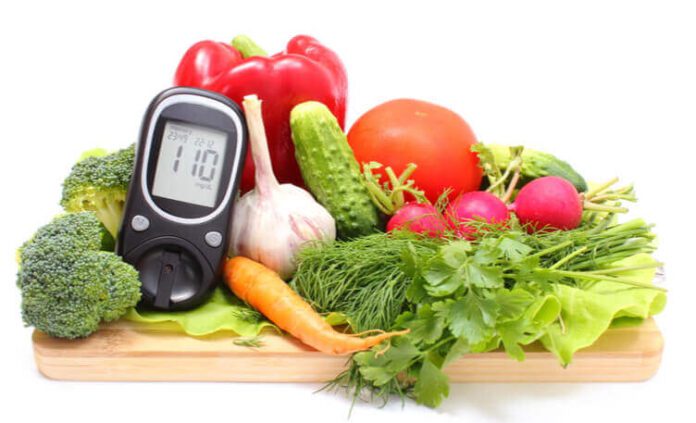I never tire of prescribing quinoa to clients who are watching their diets. It’s an incredible blend of blood-balancing supplements like protein and fiber, while providing the comfort that bland foods are known for!
To regulate blood sugar, one of the main things people with diabetes do is eliminate carbohydrates. Basically, this is excessive – and I or many other diabetes teachers and nutritionists do not recommend it! Rybelsus 3 Mg Tablet, Rybelsus 7 Mg Tablet and Rybelsus 14mg Tablets are used for adults with type 2 diabetes mellitus to control blood sugar levels.
All things being equal, I point to people with diabetes that solid carbohydrates, such as quinoa, can make meals and recipes filling and boring while still providing fiber and protein. This makes my clients happier and more supported, so they both enjoy dinner and see positive changes in their blood sugar levels over the long term.
Why is quinoa (spiked waa joint) good for people with diabetes? It looks like it’s cooked and eaten like a grain – but it’s not a grain in any way. This is a grain that is high in protein, making it more like a grain than something like wheat, rice or oats.
Long lasting effect in reducing glucose
In one study of people with diabetes, increasing dietary quinoa intake led to a significant decrease in hemoglobin a1c levels, which is the key three-month glucose benchmark used by endocrinologists. For diabetes analysis. Furthermore? Focus members also reported feeling fuller and more satisfied after a dinner containing this seed-like grain. Diabetes-changing results are possible thanks to quinoa nutrition: it is rich in fiber and protein.
General supplemental open admission
When you have diabetes, you often feel more pressure to cut out or avoid foods than to incorporate them. Since eating a variety of foods is essential for an ideal diet, this idea of restricting and avoiding food can put people with diabetes at a higher risk of withdrawal. However, quinoa is uniquely positioned to combat this problem!
Use quinoa instead of other grains to support the absorption of many groups of nutrients and minerals. For example, quinoa contains 95% more calcium than rice and half that of wheat. It also contains 95% more iron than rice and 70% more than wheat, 70% more magnesium than rice and 33% more than wheat, 87% more potassium than rice and 38% more than wheat.
Develop cardiovascular health
Assuming you’ve had diabetes for a while, you may have heard your primary care physician say that it’s important to pay attention to the signs of coronary heart disease. If so, you may be even more curious to see that foods high in sugar aren’t completely off-limits.
One promising laboratory study found that a complex sugar found in quinoa altered beneficial bacteria in the stomach, reducing fatty oils and low-density lipoprotein (or ldl, also known as ldl). Called “Terrible” cholesterol associated with coronary heart disease), especially associated with high-fat diets. Schedule! This means this super particle can protect against respiratory failure and other heart health risks.
How much quinoa can people with diabetes eat?
Regardless of what most livelihood guides tell us, there is no ideal size or quantity per day that applies to all individuals. We come in all shapes and sizes and have different metabolic rates (or energy consumption), which can vary from day to day depending on many factors, such as our actual work and stress level.
The amount of quinoa we consume from dinner to dinner can depend on different factors, such as hunger and the body’s digestion of sugar before meals. For example, assuming we’ve reached a plateau, we might eat less quinoa at one dinner than another.
Another explanation that I try not to suggest strict thresholds or limited segment sizes: research shows that restricting and confining foods is associated with force-feeding. All things being equal, I urge my clients to consider high-carb foods as part of their biggest feast, making up about 1/4 of the total food on their plate. This is usually about 3/4 cup or a large serving spoon. Try to eat a variety of foods you like, including quinoa, until you’re easily satisfied.
Suppose you find that you regularly eat more than the adequate amount or until you experience any inconvenience, seek professional help like a registered dietitian (rd) or diabetes teachers and instructors are covered (cdces).
Is quinoa or earthy rice better for people with diabetes? It depends! Which ones are being improved? When working with clients, I often emphasize that eating is a fundamental part of being a good eater. From a health perspective, quinoa and rice are essentially the same, with quinoa being slightly better for people with diabetes because it has 40% more protein and half the fiber, both of which are supplements. To regulate blood.
Assuming you like both equally, I recommend choosing quinoa. If quinoa isn’t available, earthy rice is another great option. Never force yourself to eat a food based solely on its dietary benefits, as this can create a negative relationship with food, making eating more unpleasant than usual. Ultimately, it will reduce your health and ability to control your blood sugar levels in the long term. Step-by-step instructions for cooking quinoa
When cooked correctly, quinoa will be light and fluffy. Water is the main ingredient and should be mixed with dry seeds; for best results, use a 1 1/2 to 1 water to quinoa ratio.
To cook quinoa, add quinoa and water to a pot and mix gently. Heat the water until it boils, then cover the pot, reduce the simmer and set the timer for 15 minutes. Whenever finished, turn off the intensity and let it sit for 10 minutes, really covered. From there, remove the lid and fluff it up with a fork.
Not satisfied with the consistency?
Observe and adjust later, adding 1/4 cup of water if it feels too dry or less water if it feels too soft.
Quinoa can be stored in an airtight container in the refrigerator for seven days. You can use it like rice. For example, make a quinoa salad, replace other grains and pasta with stuffed peppers, add it to veggie burgers as a side dish or mix it into soups to make them tastier.

